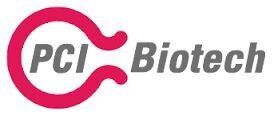Successful completion of the third dose group in the Amphinex study. Continued good tolerability and strong tumour response is reported, with an apparent high treatment specificity for cancer cells.
Oslo, 16 March 2010 - PCI Biotech reported today that it has completed the treatment of the third dose group in the phase I/II study of its proprietary photosensitiser Amphinex® used in combination with the cytotoxic agent bleomycin in cancer patients. Complete clinical regression of all evaluable treated tumours is observed within a few weeks of treatment also on patients at the third dose level, although one patient died of the underlying disease before complete clinical regression could be achieved. No drug-related serious adverse events have been reported.
To date eleven patients have been given a single photochemical internalisation (PCI) treatment with Amphinex®. Patients with osteosarcoma (1) and squamous cell carcinoma (7) of the Head & Neck and adenocarinoma (3) of the breast have been included and the effectiveness of the PCI treatment seems to be similar across all cancers treated so far. The PCI-technology could therefore potentially be used for local treatment of several different cancers. Three serious adverse events have been recorded; however not deemed drug-related by the investigator.
The investigators at University College Hospital (UCH) in London have observed an apparent high specificity for cancer cells of the PCI treatment. Tumours of very different depths have been treated and it seems that mainly the cancer cells are killed by the treatment, leaving the healthy tissue underneath the tumour largely unaffected. In addition, one patient with a tumour under the skin has been effectively treated with superficial illumination without ulceration of the skin.
"The results of treatment in the patients seen so far continue to be very impressive. While this study is primarily aimed at investigating the safety of Amphinex®, the tolerability of normal tissues is an interesting observation that would prove highly beneficial in clinical practice.", says Principal Investigator Colin Hopper at UCH in London.
When activated by light, Amphinex® promotes effective local delivery of a variety of therapeutic molecules, e.g. bleomycin, through triggered endosomal release. The primary objective of the UCH study is to assess the maximum tolerated dose of Amphinex®, in PCI treatment with bleomycin. Secondary objectives include determination of the antitumor activity of the treatment, as well as the pharmacokinetics of Amphinex®. Preliminary analysis of the pharmacokinetic data indicates that Amphinex® has a half-life in blood of about 18 days. Amphinex® also seems to be present in the skin for a prolonged period, but is barely detectable 3 months after administration. The absence of drug related side effects in the study suggests that the slow kinetics does not impose any additional safety concern.
The patients at the fourth dose level of Amphinex® will be treated as soon as possible, and the study is expected to be completed within 2010.
